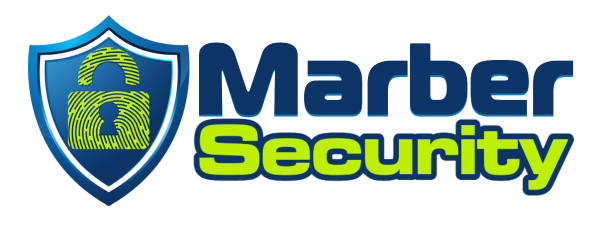Read the original article at https://us-cert.cisa.gov/ncas/alerts/aa23-039a
Original release date: February 8, 2023
Summary
The Cybersecurity and Infrastructure Security Agency (CISA) and the Federal Bureau of Investigation (FBI) are releasing this joint Cybersecurity Advisory (CSA) in response to the ongoing ransomware campaign, known as “ESXiArgs.” Malicious actors may be exploiting known vulnerabilities in VMware ESXi servers that are likely running unpatched and out-of-service or out-of-date versions of VMware ESXi software to gain access and deploy ransomware. The ESXiArgs ransomware encrypts configuration files on ESXi servers, potentially rendering virtual machines (VMs) unusable.
CISA has released an ESXiArgs recovery script at github.com/cisagov/ESXiArgs-Recover. Organizations that have fallen victim to ESXiArgs ransomware can use this script to attempt to recover their files. This CSA provides guidance on how to use the script.
ESXiArgs actors have compromised over 3,800 servers globally. CISA and FBI encourage all organizations managing VMware ESXi servers to:
- Update servers to the latest version of VMware ESXi software,
- Harden ESXi hypervisors by disabling the Service Location Protocol (SLP) service, and
- Ensure the ESXi hypervisor is not exposed to the public internet.
If malicious actors have compromised your organization with ESXiArgs ransomware, CISA and FBI recommend following the script and guidance provided in this CSA to attempt to recover access to your files.
Download the PDF version of this report: pdf, 712 kb.
Note: CISA and FBI will update this CSA as more information becomes available.
Technical Details
Open-source reporting indicates that malicious actors are exploiting known vulnerabilities in VMware ESXi software to gain access to servers and deploy ESXiArgs ransomware. The actors are likely targeting end-of-life ESXi servers or ESXi servers that do not have the available ESXi software patches applied.[1]
ESXiArgs ransomware encrypts certain configuration files on ESXi servers, potentially rendering VMs unusable. Specifically, the ransomware encrypts configuration files associated with the VMs; it does not encrypt flat files. As a result, it is possible, in some cases, for victims to reconstruct the encrypted configuration files based on the unencrypted flat file. The recovery script documented below automates the process of recreating configuration files. The full list of file extensions encrypted by the malware is: vmdk, vmx, vmxf, vmsd, vmsn, vswp, vmss, nvram, vmem.
RECOVERY GUIDANCE
CISA and FBI do not encourage paying the ransom as payment does not guarantee victim files will be recovered. Furthermore, payment may also embolden adversaries to target additional organizations, encourage other criminal actors to engage in the distribution of ransomware, and/or fund illicit activities. Regardless of whether you or your organization have decided to pay the ransom, CISA and FBI urge you to promptly report ransomware incidents to a local FBI Field Office, or to CISA at cisa.gov/report.
CISA is providing these steps to enable organizations to attempt recovery of their VMs. CISA’s GitHub ESXiArgs recovery script, which also outlines these steps, is available at github.com/cisagov/ESXiArgs-Recover. CISA is aware that some organizations have reported success in recovering files without paying ransoms. CISA’s script is based on findings published by third-party researchers.[2]
Any organization seeking to use CISA’s ESXiArgs recovery script should carefully review the script to determine if it is appropriate for their environment before deploying it. This script does not seek to delete the encrypted configuration files, but instead seeks to create new configuration files that enable access to the VMs. While CISA works to ensure that scripts like this one are safe and effective, this script is delivered without warranty, either implicit or explicit. Do not use this script without understanding how it may affect your system. CISA does not assume liability for damage caused by this script. Note: Organizations that run into problems with the script can create a GitHub issue at https://github.com/cisagov/ESXiArgs-Recover/issues; CISA will do our best to resolve concerns.
1. Quarantine or take affected hosts offline to ensure that repeat infection does not occur.
2. Download CISA’s recovery script and save it as /tmp/recover.sh.
For example, with wget: wget -O /tmp/recover.sh https://raw.githubusercontent.com/cisagov/ESXiArgs-Recover/main/recover.sh.
3. Give the script execute permissions: chmod +x /tmp/recover.sh
4. Navigate to the folder of a VM you would like to recover and run ls to view the files.
Note: You may browse these folders by running ls /vmfs/volumes/datastore1. For instance, if the folder is called example, run cd /vmfs/volumes/datastore1/example.
5. View files by running ls. Note the name of the VM (via naming convention: [name].vmdk).
6. Run the recovery script with /tmp/recover.sh [name], where [name] is the name of the VM determined previously.
a. If the VM is a thin format, run
/tmp/recover.sh [name] thin.
b. If successful, the recovery script will output that it has successfully run. If unsuccessful, it may not be possible for the recovery script to recover your VMs; consider engaging external incident response help.
7. If the script succeeded, re-register the VM.
a. If the ESXi web interface is inaccessible, remove the ransom note and restore access via the following steps. (Note: Taking the steps below moves the ransom note to the file ransom.html. Consider archiving this file for future incident review.)
- Run
cd /usr/lib/vmware/hostd/docroot/ui/ && mv index.html ransom.html && mv index1.html index.html.- Run
cd /usr/lib/vmware/hostd/docroot && mv index.html ransom.html && rm index.html && mv index1.html index.html.- Reboot the ESXi server (e.g., with the
rebootcommand). After a few minutes, you should be able to navigate to the web interface.
b. In the ESXi web interface, navigate to the Virtual Machines page.
- If the VM you restored already exists, right click on the VM and select
Unregister(see figure 1).

Figure
Read the original article at https://us-cert.cisa.gov/ncas/alerts/aa23-039a
